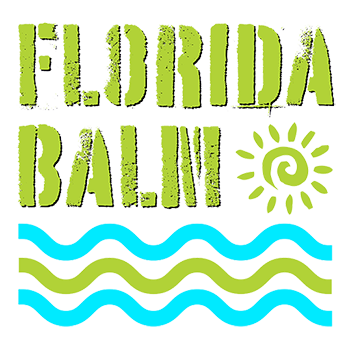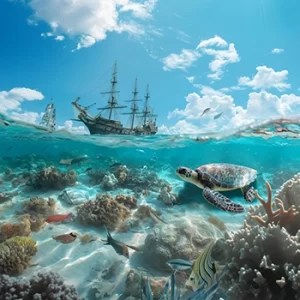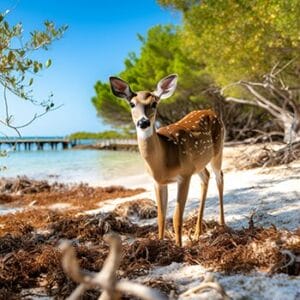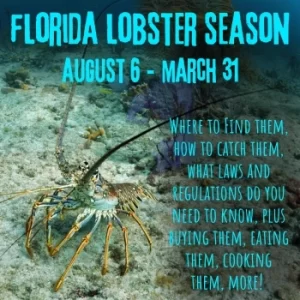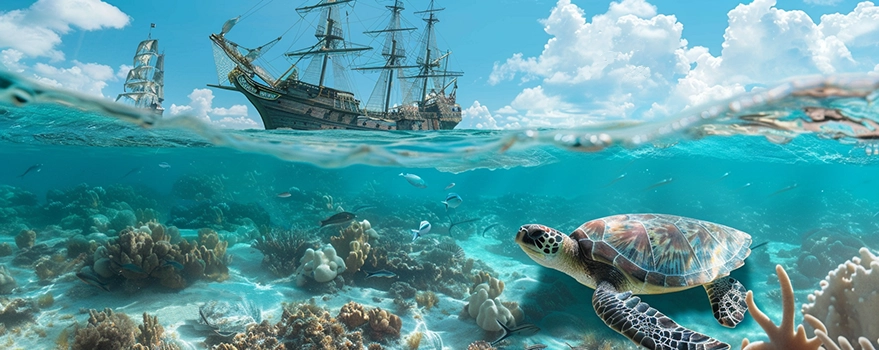
The Gruesome History of Sea Turtle Hunting in Florida
For centuries, the Florida Keys and surrounding waters were home to a thriving sea turtle population, abundant enough to sustain early settlers and become a critical part of the region’s economy.
But the practice of sea turtle hunting—once seen as a necessary and profitable industry—was as gruesome as it was widespread.
From the early 1800s to the 1900s, thousands of turtles were killed each year in brutal ways, leaving behind a legacy that reflects both human ingenuity and recklessness.
What began as a resourceful way to feed a growing population quickly escalated into a commercial enterprise with devastating consequences for the sea turtle population.
In this blog, we explore the grisly methods of turtling, the rise of the sea turtle trade, and how the population of these once-abundant creatures plummeted, leading to their endangered status today.
Contents
- The Gruesome Practices of Florida’s Sea Turtle Hunting
- The Types of Sea Turtles Found in Florida
- The Rise of Key West’s Turtle Cannery and the Turtling Industry
- From Abundance to Endangerment: The Decline of Sea Turtles
- Sea Turtles in Florida Today and Global Conservation Efforts
- The Continued Hunt: Where Sea Turtle Hunting Still Exists
- A Historical Visit: The Key West Turtle Museum

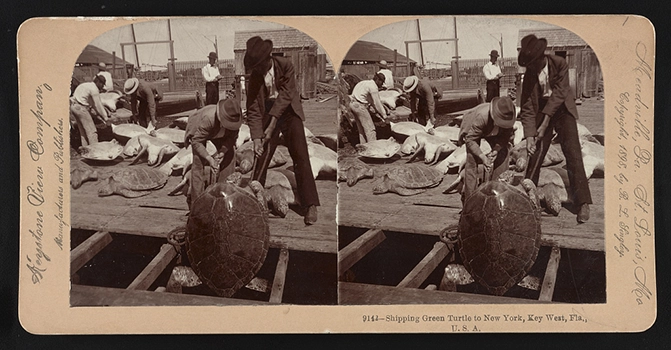
“Shipping Green Turtle to New York, Key West, Fla. U.S.A”
Library of Congress – Copyright, 1898, by B.L. Singley
The Gruesome Practices of Florida's Sea Turtle Hunting
Sea turtle hunting in Florida wasn’t always the regulated activity it is today. In fact, it was downright gruesome. Early turtlers, dating back hundreds of years (or more) would capture turtles—sometimes weighing over 500 pounds—by hunting them on boats or capturing them in shallow waters.
The captured turtles were then dragged ashore or placed in turtle kraals—shallow pens along the coast where they were kept alive until they were needed. At the time, turtle meat was a staple for sailors and settlers, and many of the captured turtles were slaughtered for their meat, shells, and oil.
Once captured, the turtles often suffered long, painful deaths. They were kept in the kraals until ready for processing, sometimes for weeks, while the hunters stripped them of everything valuable.
Turtle oil was sold for medicinal purposes, the meat was canned and exported (especially to Europe and the U.S. Northeast), and the shells were turned into jewelry and other crafts.
Turtles would often be hung from piers, strung by their flippers, in what was not only a display of the abundance of this industry but also a grim reminder of the high toll it took on the population.
The Key West Turtle Cannery became one of the largest and most famous operations in Florida, processing thousands of turtles annually.
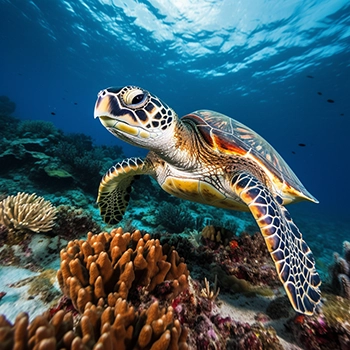
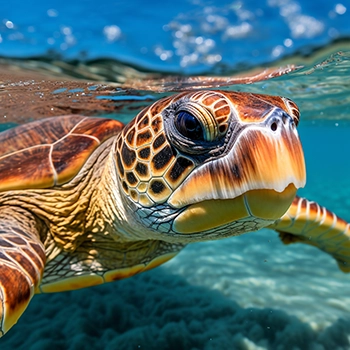
The Types of Sea Turtles Found in Florida
Florida’s waters are home to several species of sea turtles, but green turtles were the most sought after by hunters due to their size and the quality of their meat. However, there are five types of sea turtles commonly found in Florida waters:
- Green Turtles: These are the most commonly targeted species due to their size and edible meat. They can weigh up to 500 pounds and are known for their herbivorous diet.
- Loggerhead Turtles: Known for their large heads and powerful jaws, loggerheads are the most common sea turtle species found in Florida.
- Leatherback Turtles: These are the largest species of sea turtle, reaching up to 2,000 pounds. They feed primarily on jellyfish and are critically endangered.
- Hawksbill Turtles: Hawksbills are smaller and known for their distinctive beaks. Their shells were highly prized in the jewelry trade.
- Kemp’s Ridley Turtles: The smallest of the sea turtles, Kemp’s Ridleys are found mostly in the Gulf of Mexico and are critically endangered.
While green turtles were especially prized for their meat, with green turtle soup being a popular dish in the Florida Keys for decades. But all sea turtles suffered from the hunting practices of this time.
Their slow reproductive rates made them vulnerable to overexploitation, and their populations began to decline rapidly as commercial turtling spread.
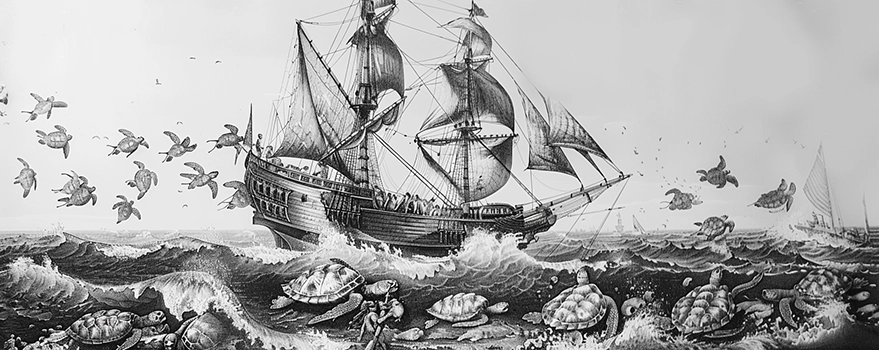
The Rise of Key West's Turtle Cannery and the Turtling Industry
The commercial sea turtle industry exploded in the late 1800s with the rise of the Key West Turtle Cannery, a major player in the global turtle trade. The industry took advantage of the turtle’s abundance in the Keys and other parts of Florida, and turtles were captured by the thousands.
In fact, one estimate claims that at the height of the industry, over 200,000 turtles were processed annually in Key West alone. This large-scale operation involved not just hunting but also the canning and exporting of turtle meat, which became a sought-after delicacy, especially in the form of turtle soup.
As businesses like the Key West Turtle Cannery flourished, sea turtles were killed at an unsustainable rate.
Unfortunately, at the time, no regulations or conservation measures were in place to protect these creatures. Instead, their shells were used for decorative items like combs and buttons, while their oil was sold for various commercial uses.
This unprotected, unregulated industry led to the decimation of sea turtle populations.
From Abundance to Endangerment: The Decline of Sea Turtles
By the early 1900s, the once-abundant sea turtle populations around Florida were in sharp decline. Overfishing, hunting, and habitat destruction took a significant toll on the species.
By the 1950s, many turtle species had become endangered.
It wasn’t until the 1970s that laws like the Endangered Species Act and Marine Turtle Protection Act began to take effect, focusing on the protection of nesting habitats and the prohibition of hunting.
Today, sea turtle populations are slowly recovering, but their numbers remain far below historic levels. Conservation efforts across Florida, including nesting site protection and marine habitat restoration, have provided a safer environment for these creatures to thrive.
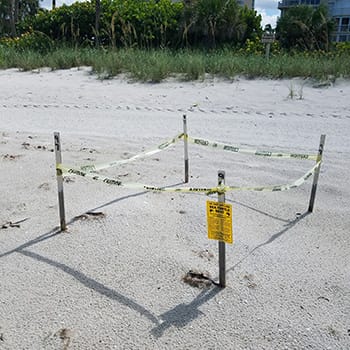
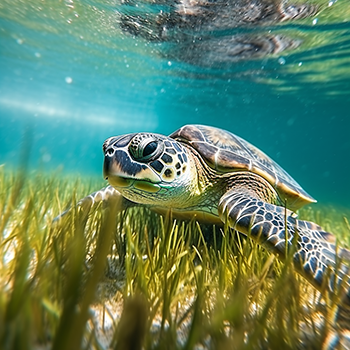
Sea Turtles in Florida Today and Global Conservation Efforts
Despite the dark history of sea turtle hunting, today’s efforts in Florida are largely focused on conservation. All sea turtle species are protected under federal law, and conservation groups have worked tirelessly to restore populations.
Today, sea turtles are regularly monitored by state and federal agencies, and nesting beaches are protected to prevent further harm.
Innovative programs like nesting site relocation and public education about the importance of protecting sea turtles help ensure that these creatures have the opportunity to reproduce and thrive.
Additionally, marine debris cleanup and efforts to protect the marine environment are critical to their survival.
The Continued Hunt: Where Sea Turtle Hunting Still Exists
Although hunting sea turtles is illegal in most parts of the world, some countries continue to allow it. Certain regions of Mexico, the Caribbean, and parts of Asia still permit the hunting of sea turtles, often under cultural or subsistence-based justifications.
In some of these places, turtle meat remains a delicacy, and their shells are still used for ornamental purposes. However, international conservation organizations are working hard to curb this practice and promote sustainable alternatives.
A Historical Visit: The Key West Turtle Museum
If you find this history of early Florida settlers, turtling, and the Florida Keys fascinating, a great way to learn more is to visit the Key West Turtle Museum, housed in the former Turtle Kraals and Cannery building.
This museum, which opened in 1983, preserves the legacy of this important part of Key West’s history. Here, visitors can explore the history of sea turtle hunting in the Keys and learn how the area transitioned from a hub of exploitation to one of conservation.
Visit the Turtle Cannery Museum / Key West Turtle Museum:
200 Margaret Street on the Thompson Pier
The story of sea turtle hunting in Florida is a sobering one, but it’s also a reminder of the importance of preserving the natural world for future generations.
While sea turtles have survived the worst of human exploitation, their protection continues to be a priority, ensuring these magnificent creatures can thrive in Florida’s waters for many years to come.
Some Florida Vacation Ideas...
As an Amazon Associate I earn from qualifying purchases at no additional cost to you.
